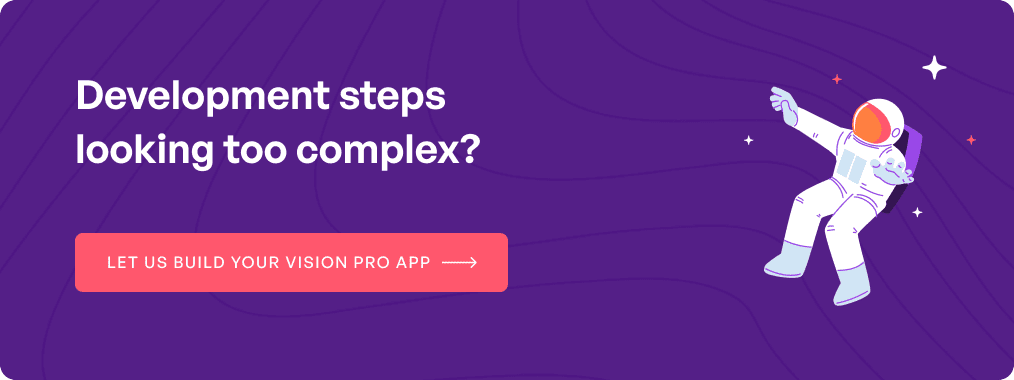Today, as we move quicker than ever, the exciting worlds of virtual and augmented reality are not merely growing — they are flourishing with endless possibilities. Imagine stepping into a market assured to generate a staggering $38.6 billion by 2024, with expectations to soar to $58.1 billion in just four more years. This isn’t the future; it’s now, and it’s a golden opportunity for innovators and creators like you.
The opportunity:
- The AR & VR market is exploding, projected to hit $38.6 billion in revenue by 2024.
- Growth isn’t slowing down, with a forecast of $58.1 billion by 2028.
- AR Software leads the charge, expected to reach $13.0 billion in 2024.
Why it matters:
- The U.S. is at the forefront, with revenues expected to reach over $10 billion.
- The number of users diving into AR & VR could reach 3,674.0 million by 2028.
- That’s over half the world getting involved, with user penetration projected at 52.8% in 2024, climbing to 55.9% by 2028.
This innovative platform helps developers gain access to transformative tools, enabling them to design experiences memorable in the vast digital arena. Whether your goal is to redefine entertainment, transform educational experiences, or revolutionize how we interact with the digital world, Apple Vision Pro is your canvas. Unleash your creativity and start building the future today.
This is your chance to make an impact in a rapidly expanding market. The time to start is now. Let’s build something extraordinary with Apple Vision Pro.

Table of contents
What is Apple Vision Pro?
With Apple Vision Pro, we step into a new era where interacting with technology becomes more intuitive and exciting. The Apple Vision Pro is an innovative spatial computer that seamlessly integrates digital content and applications into your physical environment, allowing you to interact with them using natural movements of your eyes, hands, and voice.
Experience Apple TV, Safari, and Photos in a whole new way with visionOS on Apple Vision Pro. It lets you reshape your environment, stay connected via FaceTime, and discover incredible third-party apps all through the App Store.
This technology goes beyond mere hardware. It opens doors for creators to build applications that merge the digital world with our physical reality. Apple Vision Pro turns limitless imagination into reality, reshaping the future of how we engage digitally.
visionOS: what you need to know
visionOS is the special operating system for the Vision Pro headset, designed specifically for blending digital creations with the real world. This makes it perfect for building engaging apps and games. It’s built using the same solid foundation that powers Apple’s other operating systems, making it both reliable and innovative.
What makes visionOS stand out is its architecture, which includes a special part focused on making visuals interactive in real-time, perfect for Vision Pro’s immersive experiences. It offers a 3D interface that allows apps to be displayed in new ways, beyond the limits of traditional screens, and even adjusts to natural light to make things look more realistic.
From the get-go, visionOS will support a wide range of apps, including creative tools, productivity software, and applications for education and professional use.
Benefits of building an Apple Vision Pro app
Owning an Apple Vision Pro app opens doors to a unique blend of technology and creativity like never before. Through immersive experiences, these apps redefine how we engage with digital content, offering endless opportunities for businesses to stand out and innovate.
With every Apple Vision Pro app, you’re not just going along with the latest tech trends. You’re leading the charge, inviting users into a world filled with endless possibilities and unforgettable interactive journeys.
1. Enhanced customer engagement:
In a marketplace where standing out is everything, Apple Vision Pro apps offer a unique edge. They transform customer interaction into an immersive journey, letting users explore your offerings in a whole new way.
These personalized experiences deepen connections, promoting loyalty and driving conversions. With Apple Vision Pro, engagement goes beyond the screen, creating lasting impressions and meaningful relationships.
2. Immersive experiences:
With Apple Vision Pro apps, you can offer your customers a dive into an experience where the digital and the real world merge beautifully. Imagine them trying out your products or being part of a story that feels almost real.
This kind of immersive engagement is not just entertaining, but also leaves a lasting impression, making your brand unforgettable and more appealing to come back to.
3. Competitive advantage:
Having an Apple Vision Pro app in your arsenal places you a step ahead in the competitive landscape. This innovative platform enables you to showcase your products or services in an innovative manner that aligns with the expectations of today’s tech-savvy consumers.
Providing unmatched AR experiences with Apple Vision Pro not only sets your brand apart but also establishes you as a leader in your industry.
4. Increased operational efficiency:
Adopting an Apple Vision Pro app transforms more than just customer engagement; it significantly improves how your business runs day-to-day. This advanced tool streamlines training provides immersive simulations, and delivers instant data access, simplifying complex tasks.
By equipping your team with the ability to see relevant information overlaid onto their real-world tasks, you enable quicker, smarter decision-making. This reduction in errors and increase in speed boosts your team’s productivity, propelling your operational efficiency forward.
5. Virtual events and meetings:
With an Apple Vision Pro app, turn every virtual event and meeting into an experience that participants will remember. Imagine hosting conferences, seminars, or workshops in a space where interaction feels as natural and engaging as being there in person.
This technology brings people together from across the globe, fostering a sense of connection and collaboration that traditional video calls simply can’t match.
6. Versatility across industries:
The true magic of Apple Vision Pro apps lies in their incredible flexibility, making them a perfect match for any field, be it retail, healthcare, education, or manufacturing. This versatile technology unlocks a world of opportunities for businesses to transform customer interactions, streamline processes, and drive growth.
No matter the industry, Apple Vision Pro can be tailored to address unique challenges, paving the way for unparalleled innovation and operational excellence.
Top 6 business use cases for Apple Vision Pro
Exploring the Apple Vision Pro reveals its vast potential beyond personal entertainment, especially for businesses across various sectors like manufacturing, construction, medicine, education, and retail. Here’s how the innovative features of Apple Vision Pro can revolutionize traditional business practices, offering unique solutions and opportunities in six key areas:
1. Real-time remote assistance:
- Traditional remote support challenges are solved as the Vision Pro allows technicians to guide someone through repairs hands-free and in 3D space.
- This technology is particularly useful in manufacturing for remote maintenance and complex machine repairs, minimizing downtime and increasing efficiency.
- Companies like PTC have demonstrated its practical application, showing its effectiveness in real-world settings.
2. Remote collaboration:
- The Vision Pro enhances virtual teamwork by supporting collaboration in a shared 3D space, ideal for meetings, brainstorming, and presentations.
- It helps remote teams feel less isolated by simulating physical presence, making professional development more accessible and cost-effective.
- This technology fosters a sense of closeness and collaboration, transforming how teams interact from afar.
3. E-learning:
- The Vision Pro’s immersive capabilities make it an effective educational tool, allowing for deeper conversations and connections than traditional videoconferencing.
- It supports innovative training experiences, such as simulating environments that are too hazardous to explore in real life, enhancing safety and learning outcomes.
- This opens up new possibilities for learning complex subjects and conducting safer, more effective training sessions.
4. Healthcare:
- Following the example of devices like Microsoft HoloLens, Vision Pro introduces new avenues for immersive assistance in surgeries and care.
- It enables the development of telemedicine apps, immersive remote care, and 3D data visualization, improving patient care and doctor efficiency.
- The headset also supports immersive surgical simulations, offering valuable prep and training opportunities for healthcare professionals.
5. Product demonstrations:
- Vision Pro can enrich the retail experience with virtual try-ons and interactive product demos, allowing customers to explore products in detail from their homes.
- Retailers can create virtual showrooms, enhancing customer engagement, satisfaction, and potentially boosting sales through personalized and immersive shopping experiences.
- This advanced approach to product demonstration helps customers make informed decisions by experiencing products in a virtual environment.
6. Real estate and construction:
- The device offers a new level of real estate visualization and virtual tours, providing customers with realistic views of properties and spaces.
- Architects and clients can collaborate in real-time on projects, improving communication and project outcomes.
- Vision Pro’s capabilities enhance architectural planning and client engagement by allowing detailed exploration and interactive planning processes.
As businesses begin to embrace Apple Vision Pro applications, its potential to revolutionize industry practices and enhance augmented reality strategies becomes increasingly evident, marking a new era of immersion and interaction.
Step-by-step guide to building an Apple Vision Pro app
Starting your journey to create apps for Apple Vision Pro is about understanding a space where imagination becomes reality. Our guide is crafted to lead you, step by step, through this thrilling process. It’s your pathway to transforming innovative concepts into tangible experiences.
Let’s look into the steps of turning your creative visions into Apple Vision Pro applications that redefine what’s possible.
1. Understanding the Apple Vision Pro ecosystem
Diving into the development of an Apple Vision Pro app begins with grasping the intricacies of its ecosystem. The Apple Vision Pro extends the boundaries of conventional screens into a vast, immersive canvas where interactions are not limited to touch but expand to natural gestures and commands using eyes, hands, and voice.
At the heart of this experience is visionOS, a groundbreaking operating system that integrates digital elements into your physical space as if they were right beside you. Familiarizing yourself with these capabilities is the key to unlocking the full potential of what your Apple Vision Pro app can achieve.
2. Setting up your development environment
Before jumping into the creative process of building an Apple Vision Pro app, preparing your development environment is crucial. This step involves gathering all necessary tools and software, like Xcode, SwiftUI, RealityKit, and ARKit, and setting up your workspace for efficiency.
Starting to build apps for VisionOS is easy for developers with Xcode, Apple’s all-in-one software for making apps. Xcode has everything a developer needs, like tools for organizing projects, writing and editing code, designing user interfaces, fixing bugs, trying apps on different devices, and checking how well they run. To make a new VisionOS app, developers can use SwiftUI, which is a newer way of creating apps that makes the process straightforward and efficient.
With these resources, you’re equipped to harness the innovative capabilities of Apple Vision Pro, crafting immersive experiences that push the boundaries of digital interaction.
3. Essential factors in developing apps for Vision Pro
In crafting apps for Apple Vision Pro, it’s not just about the code. Consider user experience, how fast and smoothly your app runs, and its look and feel. These elements are key to making an app that stands out. Think about teaming up with specialists in AR/VR to blend these aspects perfectly, creating an app that captivates and delights users.
4. Coding for Apple Vision Pro
When coding for Apple Vision Pro, embracing best practices is crucial. It simplifies your development journey and results in superior apps. Prioritize clean code, focus on user interaction, and ensure your app leverages the unique features of Vision Pro. This approach not only streamlines development but also enhances the user experience, setting your application apart in the immersive world of AR and VR.
5. Test and debug your Vision Pro app
Thorough testing and debugging are key steps in perfecting your Vision Pro app. Dive into using emulators, simulators, and tests on actual devices to guarantee smooth performance under every condition. This attention to detail not only boosts user happiness but also reduces problems after your app goes live, ensuring a seamless experience for all.
6. Submitting Your Vision Pro app to the Apple app store
Bringing your development journey to a close, submitting your Vision Pro app to the Apple App Store is a pivotal moment. Though Apple’s submission guidelines might initially appear complex, following a step-by-step guide can demystify the process. Approach this final step with assurance, ensuring your app adheres to Apple’s rigorous standards, ready to make its mark on the world.
Apple Vision Pro features breakdown
Commencing on the journey of exploring the Apple Vision Pro unveils a suite of features that redefine our interaction with technology. More than just hardware, Apple Vision Pro acts as a bridge to immersive experiences, seamlessly combining the digital world with our physical one.
Here’s a quick dive into the standout features that make the Vision Pro a game-changer:
- Control with Ease: Navigate through apps and environments using just your eyes, hands, and voice commands, thanks to the sophisticated tracking system.
- Beyond the Screen: Experience a 3D user interface that allows you to arrange digital content in the space around you, breaking free from traditional screens.
- Revolutionize Meetings: FaceTime on Vision Pro uses spatial computing to make virtual meetings feel like you’re in the same room, supported by life-sized video tiles and spatial audio.
- Entertainment Redefined: Enjoy cinema-quality movies and over 250 new spatial games, all enhanced by immersive video and spatial audio, compatible with your favorite game controllers.
- Extensive App Universe: Access a dedicated App Store with over 600 apps designed for visionOS, plus enjoy seamless compatibility with a multitude of iOS and iPadOS apps.
- Transform Your Space: Customize your surroundings with the Environments feature, changing your real-world backdrop into a virtual or mixed-reality scene complete with its own soundscape.
- Personalized Digital Presence: Create a hyper-realistic digital avatar for use in FaceTime and other applications, while EyeSight technology keeps you connected to the real world by mimicking your natural eye movements.
Apple Vision Pro tech specs: a detailed review
Diving into the virtual reality world, Apple’s Vision Pro stands out as a technological marvel, setting new standards in the VR landscape. With its advanced specs, it excels in being merely a VR headset, marking a significant leap forward.
Let’s break down what makes the Apple Vision Pro so special:
Display & Resolution:
- Boasts two 1.41-inch micro-OLED displays
- A stunning 23 million pixels combined
Frame Rate:
- Offers a smooth 90 FPS
- Switches between 90Hz, 96Hz, and 100Hz depending on the content
Eye Tracking Technology:
- Next-generation system using LEDs and infrared cameras
Optical & Audio Systems:
- ZEISS Optical Inserts for those needing vision correction
- Personalized spatial sound with amplified drivers in audio pods
Processing Power:
- Powered by the M2 chip and an R1 chip
- Handles real-time data from 12 cameras, five sensors, and six microphones
Authentication System:
- Optic ID for secure iris recognition
Storage Options:
- Available in 256GB, 512GB, and 1TB configurations
Connectivity & Compatibility:
- Works with Mac (macOS Monterey or later) and other Apple devices
- Supports Bluetooth accessories
Software:
- Runs on the cutting-edge visionOS
Accessibility:
- Inclusive support for vision, hearing, mobility, and learning needs
Frameworks and tools used to develop apps for Vision Pro
Discovering the right tools and frameworks to develop apps for Vision Pro is the key to unlocking limitless creativity with the guarantee of high performance.
Explore the tools available to bring your Apple Vision Pro app ideas to life.
1. Xcode
Xcode stands as Apple’s powerful integrated development environment (IDE) exclusively designed for macOS. It serves as the cornerstone for crafting apps across various Apple platforms, including Vision Pro.
Loaded with an array of tools and functionalities, Xcode simplifies the app development process for Vision Pro. Notably, it boasts a simulator enabling developers to test apps virtually, ensuring seamless performance before deployment.
2. SwiftUI
SwiftUI emerges as a cutting-edge framework tailored for crafting user interfaces across Apple platforms. Its declarative nature simplifies UI design by focusing on desired appearances rather than intricate technicalities.
For Vision Pro app development, SwiftUI shines as it enables the creation of immersive spatial experiences. With SwiftUI, developers can seamlessly overlay 3D models onto the real world, leveraging Vision Pro’s camera to track user movements for a truly immersive interaction.
3. RealityKit
RealityKit emerges as a specialized 3D rendering engine tailored explicitly for Vision Pro. Using RealityKit, developers can design apps that offer users the ability to visualize 3D models of products within their own living spaces. Leveraging the Vision Pro camera, these apps can accurately track users’ surroundings and position 3D models within their real-world context.
This functionality enhances the shopping experience by allowing users to preview products in their homes before making purchasing decisions, fostering confidence and satisfaction.
4. ARKit
ARKit stands as Apple’s augmented reality framework, enabling the creation of apps that overlay digital content onto the real world. This powerful tool facilitates a myriad of immersive experiences, from games to educational apps and training simulators.
For instance, developers can utilize ARKit to craft apps like augmented reality chess, leveraging Vision Pro’s camera to track user movements and position chess pieces in the real world.
5. Unity
Unity emerges as a potent platform, renowned for crafting visually striking games, and it boasts features ideal for Vision Pro app development.
With Unity, developers harness support for spatial computing and augmented reality. For instance, envision a game where players aim to shoot virtual targets appearing in the real world. Leveraging Vision Pro’s camera, the game adjusts target positions based on user movements, offering an immersive gaming adventure.
Secrets of Apple Vision Pro for programming
Developing apps for Apple Vision Pro is about stepping into the future of computing, where your workspace and apps float in front of you in a virtual setting. This innovative approach allows apps to be arranged in a shared, three-dimensional space, changing how we think about interacting with digital content.
Here are the key insights for developers looking to utilize the full potential of Apple Vision Pro:
- Apps in 3D: All applications, including those originally designed for 2D platforms like iOS, are presented in 3D space, allowing them to “float” in the user’s environment, whether real or simulated.
- Design Considerations: Developers should focus on creating apps with a landscape orientation to match the natural field of view of users, ensuring content is easily visible and comfortably positioned within the user’s line of sight.
- Comfort and Accessibility: Content placement is crucial for user comfort, requiring an optimal balance of distance. Additionally, VisionOS supports accessibility by integrating ARKit features for hand tracking and enabling control through gestures, eye movement, and voice commands.
- Compatibility and Integration: UIKit apps can be updated to run on VisionOS, gaining 3D aspects and coexisting with newer SwiftUI apps. This allows for a smoother transition and broader app availability.
- Environmental Awareness: Apps should account for the user’s physical space, minimizing the need for extensive movement and carefully considering the use of depth and interactive elements for a more intuitive experience.
- Lighting and Interaction: Dynamic object lighting is informed by real-world conditions, enhancing realism. Developers can further refine this with custom lighting assets to match their specific app’s aesthetic and functional needs.
Embracing these “secrets” opens up a world of possibilities for creating immersive and user-friendly applications on Apple Vision Pro, marking a significant leap in how we interact with technology.
Accelerate Vision Pro development with Apple Vision Pro SDK
Apple’s support for developers looking to explore Vision Pro and visionOS is comprehensive and adapted towards innovation in spatial computing. Through a variety of tools and resources, Apple makes it easier for developers to create immersive and inclusive applications.
Here’s how developers can jumpstart their projects with the Apple Vision Pro SDK:
- Developer Documentation for visionOS: Provides essential guides and instructions to help with app development.
- Design Kits and Human Interface Guidelines: Offers tools and best practices for crafting immersive user experiences.
- Developer Labs: Available in major cities around the world, these labs provide direct support and consultations from Apple engineers.
- Dev Kit Program: A program where eligible developers can get access to the hardware needed to build apps directly on the Vision Pro.
- Accessibility Built-in: Every developer framework includes dedicated features for accessibility, ensuring experiences are inclusive for all users.
How much would it cost to build an Apple Vision Pro app?
The process of developing apps for Apple Vision Pro is filled with excitement and limitless potential. This journey from conception to the launch phase demands a commitment of approximately 640 to 1280 hours of development work. So meticulous planning becomes important while exploring the intricacies of app development for Apple Vision Pro.
The cost of developing an Apple Vision Pro app can also vary depending on your development team’s location. For instance, in North America, where the average hourly rate is $150, expect total costs ranging from $96,000 to $192,000. On the other hand, in Asia, where rates average $40 per hour, costs range from $25,600 to $51,200.
Essential tips for navigating common development challenges
When diving into the development of Apple Vision Pro apps, developers encounter various challenges that can impede progress. However, with the right strategies in place, overcoming these hurdles becomes manageable, ensuring the creation of compelling and user-friendly applications.
Here are essential tips to navigate common development challenges:
- Embrace Iterative Development: Develop your app in phases to incorporate feedback and make continuous improvements, helping to spot and solve issues early on.
- Optimize for Performance: Given the high computational demands of AR and VR, focus on optimization to ensure smooth operation across different devices, especially for real-time features.
- Focus on the User Experience: User comfort is paramount in AR and VR. Design your app with careful consideration of the interface and interactions to prevent user discomfort or motion sickness.
- Stay Updated on Platform Changes: With frequent updates from Apple, staying informed ensures your app remains compatible and leverages the latest advancements.
- Test Extensively: Conduct thorough testing across various user groups and settings to identify and fix unforeseen issues that might not be apparent during development.
Adhering to these guidelines can help developers avoid common pitfalls, ensuring their Vision Pro apps deliver a robust and captivating user experience.
Conclusion
In conclusion, the Apple Vision Pro marks a significant turning point in our interaction with technology, offering a pathway to unparalleled immersion, creativity, and efficiency. Harnessing the power of Apple Vision Pro and adhering to expert advice, developers have the chance to craft groundbreaking, immersive apps that captivate users like never before. This technology opens a thrilling frontier for businesses eager to innovate and redefine the landscape of interactive experiences.
If your company is looking to develop an app for Apple Vision Pro, don’t miss the chance to lead in innovation and redefine user engagement. Partner with us, a leading app development company in Texas, to transform your ideas into reality. Together, let’s shape the future of digital interactions and create remarkable experiences. Contact us today to start your journey towards building an exceptional app for Apple Vision Pro.





